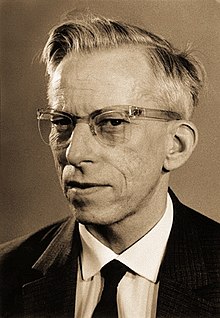When we got there, after a slight delay on the M4, we were treated to some nice pastries (I may have eaten quite a few) and a short talk from Mark, a member of the professional services team who had helped arrange the trip, about the company and how lenses are made.
The first soft hydrogel contact lens was manufactured by Otto Wichterle in 1961 using a spin casting machine made from Merkur, a Meccano type kit. After patenting the process he was able to make 5500 in the first few months, before the licence to the patent was sold without his knowledge to the USA.
There are currently 5 main methods of contact lens manufacture:
- Spin casting - still used mainly by Bausch and Lomb
- Lightstream technology - used by Alcon which uses UV light to cure the monomer
- Lathing - old fashioned method, mainly used for rigid gas permeable lenses
- Hybrid - a Coopervision exclusive with front surface moulded and back surface lathed
- Cast moulding - main technique used for mass production of soft contact lenses
The first stop for my group was a trip round the DK128 Biofinity manufacturing process, or part of it anyway, so after getting dressed up in a funky gown, hat, shoe covers and static strips we were allowed in. There we were shown some of the 12 operating lines that manufacture over 250-280,000 lenses between them every 12 hours, with each line only needing 10 people, several robots and a giant sunbed - a long tunnel lit by UV light to help set the monomer and remove impurities.
One interesting fact that came up from this part is that due to the use of colour to help track batches and individual cavities within each batch people with colour vision defects can't work in this section of the business.
After a tasty lunch, including more cake, it was time for a trip round the second part of the factory, the lathing section. In here we got to see how a button of monomer is lathed down to a thin RGP or in the case of the new hybrid methods, half moulded and half lathed. This is a slower (and more expensive) method but better for RGP and allows tints to be applied and for a very particular level of quality control. The production rate can vary between 20 and 5000 per day depending on the method and order. A custom order can be made and sent out in as little as 2 days.
We then had a talk about the summer scholarship programme, the values of the company - dedication, inventive, partners and friendly and got to here the opinion of the UK MD of manufacturing. He believes that the factory will increase production from 1.6 to 2.5 million within the next 3 years and that the market is moving more towards silicone hydrogel as this becomes feasible for daily disposables, and that drug dispensing and smart lenses will be a niche market. (I'm not so sure about this last point, I believe there is a large potential there and can see it growing as the technology develops). A quick run through some of Coopervision's lens technologies including Proclear for dry eye and presbyopic patients and multifocal lenses and it was time to go home (with extra cakes and goody bags).
After a quick trip home I was lucky enough to wind up with all the spare cake, so all it leaves me to do is thank our hosts; Mark, Lee, Ben, Carly, Elaine, Tracy and Steve for their time and for organising the trip. I found the trip fascinating seeing how a liquid polymer is transformed into a thin lens that we put into a patient's eyes.
In the last couple of weeks I have had the opportunity to use the Coopervision Biofinity lenses that we saw made, okay not the exact same ones but you get the idea. The lenses were fairly easy to insert, even with my kack-handed insertion skills; and whilst I only occasionally wear coloured lenses (joys of being emmetropic) but found the Biofinity very comfortable for the short period I had them in. It will be really interesting to try them with real patients next year and compare what they found to what I found. At least now if a patient asks how lenses are made I can give them a full answer, knowing me probably more than what they want.










